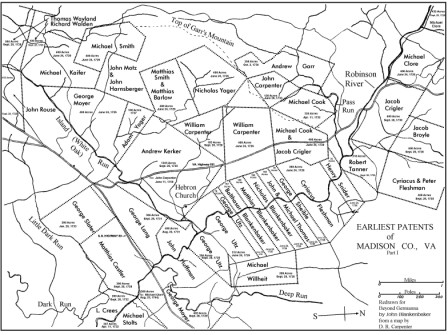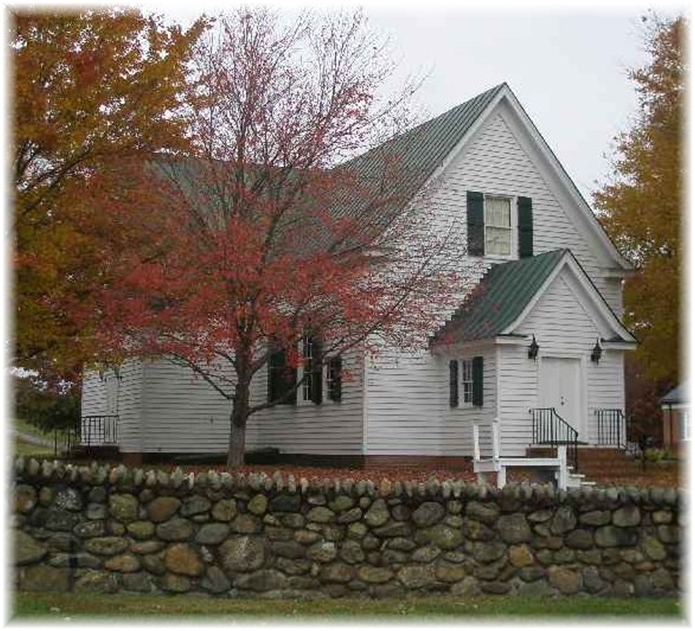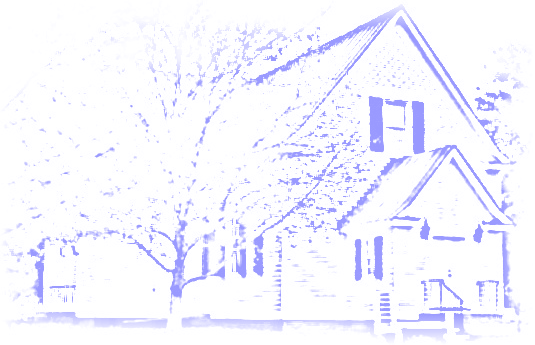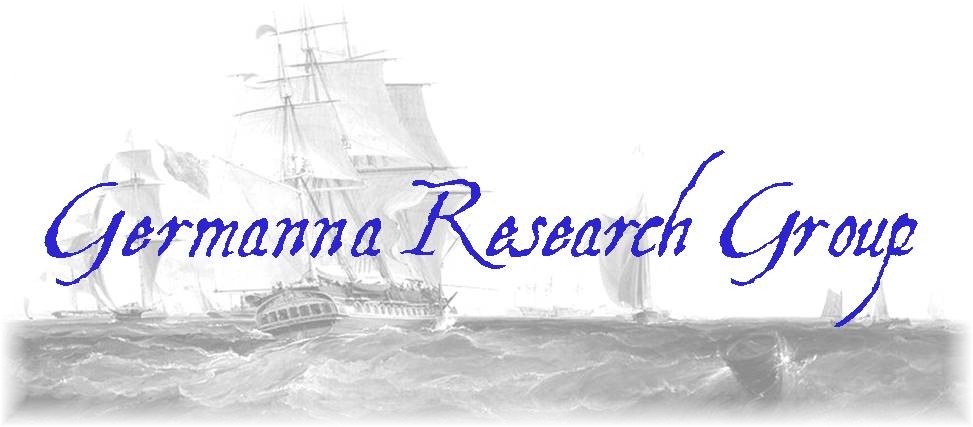There, they almost immediately built a chapel, which is believed to have been on or near a tiny corner of land owned by Mathias Rouse, near the present church, and roughly in the middle of the Germans’ land. It is said that Michael Cook was a lay reader.
 Researchers have ascertained the location of the land patents -- land purchased from the crown -- taken out by many of our Second Colony ancestors. Click the map for a larger view!
Researchers have ascertained the location of the land patents -- land purchased from the crown -- taken out by many of our Second Colony ancestors. Click the map for a larger view!
A letter written by Johann Caspar Stoever, a schoolteacher joining the colony in 1732, translated by Andreas Mielke from “Brief von Johann Caspar Stoever an die Geistlichen der deutschen lutherischen Gemeinden in London,” Francke-Nachlass der Staatbibliothek zu Berlin-Preussischer Kulturebesitz, Microfilm #18, pp. 363-365, described lay services: they would read their Bibles, sing and pray on Sundays, holidays, and apostle days, and treat the first Friday of every month being a day of repentance. Stoever was asked by the Germans to become a pastor and he traveled to Pennsylvania to be ordained. In 1733, 193 acres of land was bought from William Carpenter for the church, the deed in the names of Michael Cook and Michael Smith. In 1734, Stoever, Michael Holt, and Michael Smith travelled to London, Holland and Germany on a fundraising trip. A letter housed at the London Record Office, signed by Stoever in 1734, states that there were 62 families with 274 individuals in the church congregation. This letter asked the Crown for relief from parish levies, which was granted for 10 years provided the Germans maintained their own minister. The trip was a success and, although Stoever died before he could return, funds were raised for a church and a glebe, and slaves to work the glebe.
The church was built in 1740 using traditional German building techniques, 50 by 26 feet with a small vestry on the north side, and balconies on each end. The building was originally was a rectangular building with balconies on each side. An addition was made in 1790 on the south side of the building which gives the structure the shape of a cross. A pastor who had been recruited by Stoever, George Samuel Klug, ministered to the group from 1739 to 1764.
 The Hebron Lutheran Church today.
The Hebron Lutheran Church today.
In May of 1776, another pastor, Jacob Francke, helped the Germans write a constitution for the church and on 18 October 1776, members of the Church signed a petition asking again that they be freed from their duties to tithe to support the Anglican Church. Their four page petition can be found on the Library of Congress’ website, under Virginia Religious Petitions, Culpeper County. Francke later left the pastorate and became a silversmith.
The Church, at this time known as the German Church or the Dutch Church, played a role in the election of James Madison to the first Congress in 1789. Madison had been instrumental in spearheading the ratification of the Constitution by the required number of colonies, but it was a Constitution without a Bill of Rights guaranteeing individual freedoms. Patrick Henry, the governor of Virginia, blocked Madison from a seat in the first Senate, and gerrymandered electoral districts so that James Monroe would be running against Madison for a seat in the House of Representatives. Culpeper County, which at that time included present-day Madison County, Virginia. Culpeper County contained a number of Baptist ministers who had been jailed for heresy and the right to “freedom of conscience” was important in that area. Madison was persuaded that he must convince voters in the area – Culpeper County being especially “critical” -- that he would support a Bill of Rights, and especially freedom of conscience, in the new Congress.
At the end of January, 1789, just days from the election on February 2, Madison and Monroe visited the German Church, described later by Madison as a “nest of Dutchman.” Madison stated in later letters,
“the members of this church generally vote together, and whose vote might very probably turn the scale….the Service was performed, and then they had music with two fiddles. They are remarkably fond of music. When it was all over, we addressed these people, and kept them standing in the snow listening to the discussion of constitutional subjects. They stood it out very patiently—seemed to consider it a sort of fight, of which they were required to be spectators.”
Madison won the election; the vote in Culpeper County was 256 for Madison to 103. This was no small matter as Madison's overall margin in his 8-county district was only 336 votes. The author Richard Labunski, in his book James Madison and the Struggle for the Bill of Rights, Oxford University Press, 2007, wrote in his conclusion the following: "It is impossible to know if we would have a Bill of Rights today had Madison lost the Congressional election in February 1789. But there is no doubt that it was a crucial moment in the country's history, and a person of extraordinary ability was there to see that those amendments--upon which so much of our freedom depends--became part of the Constitution." We are proud that our ancestors in the Hebron congregation played a role in Madison's election.
In 1790, an addition was made to the east side of the church, adding a nave, also with a balcony. In 1802, a Tannenberg organ was installed in that balcony, purchased from Lititz, Pennsylvania, by “Blind” John Yager, a church elder, and hauled in a wagon by Michael House and Jacob Rouse. “Blind” John Yager’s descendants are members of the Germanna Research Group today.
There was dissension in the Church, however, regarding the continued use of the German language for services. In 1805, some of the congregation decided to go to Kentucky to found their own church in what is today Boone County, Kentucky, the Hopeful Lutheran Church. In 1812 or 1813, the pastor at the German Church, William Carpenter, a grandson of the immigrant John Carpenter and Anna Maria Kerker, migrated to Kentucky to preach at this Church.
Today, the church still stands in the lovely Robinson River Valley in Madison County, Virginia. Visitors can see the inscription of “1740” on one of the original church beams. They can also see the original Tannenberg organ, which is the only Tannenberg organ still played in its original home. The sound of the organ, however, is not as it would originally have been heard, because between 1802 and the Civil War, a plaster ceiling was added to the church that detracts somewhat from the music that would have reverberated in the original vaulted roof of the church. The plaster ceiling itself, however, became a thing of beauty when Joseph Oddenino, an Italian immigrant who had served as a musician in the Union Army, stayed on in Madison County and painted a fresco on the ceiling. His son Luigi married a descendant of the Second Colonists, and their descendants are part of the Germanna Research Group today.
Hebron Lutheran Church
Historic Preservation Fund
This fund is accumulated for the purpose of any preservation or repair that may become necessary, as was the case when a section of the ceiling over the west balcony fell some years ago. The ceiling was repaired; however, we later realized the need to do preventive work to conserve the ceiling so that such a loss might not be repeated. That work was completed at considerable cost, about $20,000.00. The Historic Preservation Fund is to be used exclusively for the church building and the Tannenberg organ.
To contribute to this fund, checks may be made to Hebron Historic Preservation Fund, and mailed to Hebron Lutheran Church, PO Box 1009, Madison, VA 22727.
 This Website is owned and maintained by Second Colony LCC, a Maryland Limited Liability Company, dedicated to improving our understanding of the Second Colony of the Germanna immigrants and sharing that knowledge with others. Copyright Second Colony LLC.
This Website is owned and maintained by Second Colony LCC, a Maryland Limited Liability Company, dedicated to improving our understanding of the Second Colony of the Germanna immigrants and sharing that knowledge with others. Copyright Second Colony LLC. 